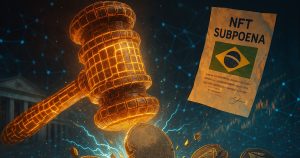Some would say that Bitcoin’s time in the limelight is nigh. Some others would say that, compared to other emerging blockchain technologies, Bitcoin’s technological development has hit a slump.In this article series, we’d examine some of the innovative features that Bitcoin has developed over the years, both in response to and as the author’s loose interpretation of a study by Max Mittelstaedt.ScarcityWhen we ask the question: “what makes Bitcoin the OG cryptocurrency?” it implies and precedes two other questions. First, it is OG (original gangsta, or, in street speak, what “keeps it real” and recognizes itself as such), because it is the first and the foremost cryptocurrency. The alpha cryptocurrency, if you may. This begs the question: in a rapidly evolving crypto and blockchain space, how does it stay relevant?The answer is scarcity. Bitcoin has a fixed supply that does not depend on supply, rather, it complexifies over time. Bitcoin’s fixed supply means that it will one day run out, but the approach towards that point in time would be greater in difficulty as it closes in proximity. The difficulty of block propagation, and the computing power and resources required to do so, would scale up and slow down the process.Bitcoin will be rare in the coming years, it will be both a store of value, a hedge against inflation (if you are of that particular persuasion), and a means of payment over a globally-distributed, peer-to-peer network: hence its underlying power to transform how we look at and think about money.DecentralizationTheoretically, Bitcoin is still a decentralized network, perhaps not as much as it was originally conceived by Satoshi Nakamoto back in 2009. The increasingly skewed concentration of Bitcoin holders towards those who hold large amounts has been the bane of actual decentralization, or, that is to say, an equitable network that benefits all.This is no longer the case: whales, or those who hold large amounts of Bitcoin and have done so for many years, including firms such as MicroStrategy and financial institutions like Grayscale, have stored more Bitcoin than any other single individual. The collapse of platforms such as the now infamous Mt. Gox also ties in the question of whether Bitcoin, however valuable, would go on to outlive its own technology. Thankfully, by nature of its design, Bitcoin still operates with the same security inherent in its consensus algorithm.Bitcoin’s monetary policy, as enforced by its distributed network, is “the most secure network in the world,” according to Max Mittelstaedt. I would disagree on this matter. It is secure, yes, but it cannot claim to be the most secure network. To this author’s mind, the most secure network is one that only has a singular entry point, that is, only its creator can make use of it. But this is also why Bitcoin remains as one of the best blockchain networks if only in terms of its security: it is distributed to a fault, with over 10,000 nodes running the whole network. Permissionless Operation, Predictable IssuanceAs an open network, Bitcoin’s block propagation can both be traced and determined. The current inflation of Bitcoin, according to Mittelstaedt’s study, is at 1.73%, moving towards 0% over time. Mittelstaedt further adds that the current stock-to-flow ratio of Bitcoin is at 57, which essentially makes Bitcoin among the “hardest asset[s] in the world”. This is true to a fault, and because of its open, global, and permissionless design, it works “the same everywhere and Bitcoin is for everybody as Mittelstaedt says. However, this author would disagree with the notion that “Bitcoin has no CEO or company” as the study says. While literally true, the fact that whales and financial institutions betting on the strength of Bitcoin exists provides a counter-argument to this claim.
End of Part 1 (Series of 3)Disclaimer: This article is provided for informational purposes only. It is not offered or intended to be used as legal, tax, investment, financial, or other advice. Opinions stated herein are solely of the author’s, and do not represent or reflect CryptoDaily’s position on the matter.





















